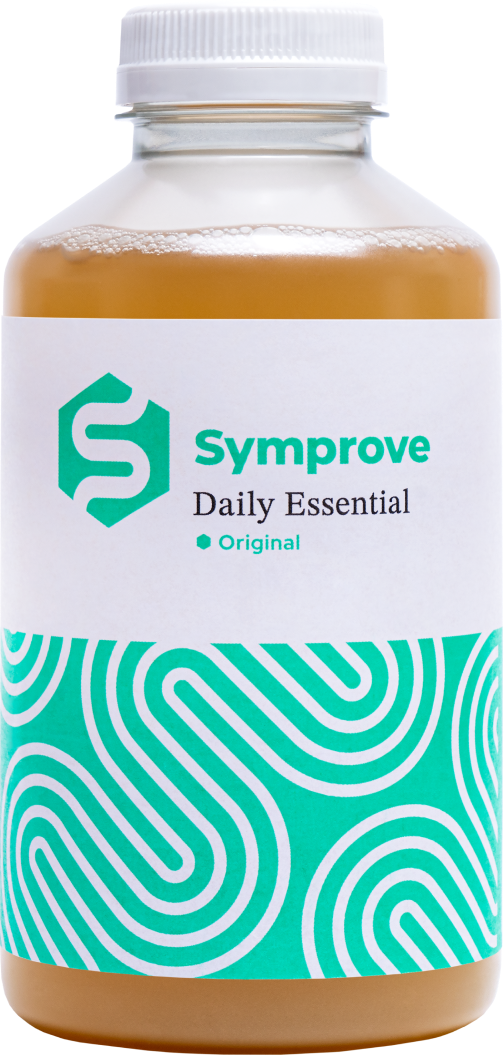Cow's Milk Protein Allergy (CMPA) is the most prevalent food allergy in infants, affecting an estimated 2-3% annually (1). This condition challenges not only dietary management but also significantly impacts the health and quality of life of affected families (2).
While CMPA typically resolves by age two for non-IgE-mediated cases and by three for IgE-mediated cases, accurate diagnosis and management can be complicated by symptoms that mimic other paediatric conditions.
Recent advances in research suggest that probiotics might play a transformative role in managing CMPA, although this exciting area of study is still developing. Early evidence points to the potential of probiotics to influence the gut microbiome positively, offering new strategies for treatment that could enhance health outcomes significantly.
This article delves into the current understanding of CMPA, focusing on the evolving role of probiotics and the broader implications of these findings for dietary management.
Understanding CMPA and Differentiating from Lactose Intolerance
CMPA is an immune-mediated reaction to proteins in cow's milk, classified into IgE-mediated, non-IgE-mediated, or mixed types. IgE-mediated reactions can cause immediate symptoms such as skin rashes and anaphylaxis, while non-IgE reactions may lead to delayed symptoms like reflux and eczema.
Unlike CMPA, lactose intolerance involves digestive discomfort due to lactose malabsorption and typically appears later in childhood without the immune-related symptoms seen in CMPA.
Current Management of CMPA
Effective management of CMPA often begins with dietary interventions. CMPA in exclusively breastfed infants is a rare condition and therefore dietary restrictions in a breastfeeding mother are usually not required (3).
In formula-fed infants, a casein-based extensively hydrolysed formula (eHF) is the recommended first choice, whilst amino acid-based formulas (AAF) are reserved for severe cases and for babies who may be faltering in growth (2,4,5).
Notably, three hypoallergenic formulas containing probiotics are available on prescription. However, their routine use in CMPA management isn’t standard practice.
The Role of the Gut Microbiome in CMPA
The composition of the gut microbiome during the first three years of life is critical for immune system development and may significantly influence the risk of developing CMPA. Dysbiosis, or microbial imbalance, has been associated with an increased risk of CMPA (6) suggesting that a healthy, diverse microbiome may play a protective role.
Factors like antibiotics, diet and delivery methods can alter the gut flora, potentially increasing CMPA risk (7). A healthy gut microbiome, supported by breastfeeding, may protect against CMPA (6). Consequently, the incidence of CMPA in exclusively breastfed infants is reported to be low in the range of 0.4%–0.5% (8,9). Despite this, the preventive effect of breastfeeding on CMPA has been inconsistent across studies.
Building on the understanding of how early-life factors can influence the gut microbiome, research has also shed light on the specific role of the gut microbiome in the development and resolution of CMPA.
Unique Gut Microbiome Composition in CMPA
Research has demonstrated that infants and children with CMPA often exhibit different gut microbiome compositions than those without food allergies. Specifically, these differences include lower microbiome diversity and altered proportions of certain bacterial groups (10). This altered microbiota profile can influence immune responses and potentially contribute to the development of CMPA.
An observational study involving 226 children highlighted that infants who resolved their milk allergy by eight years of age exhibited a distinct microbiome composition from those whose allergy persisted. Notably, those who overcame their allergy had increased levels of SCFA-producing bacteria such as Clostridia and Firmicutes, and decreased levels of Bacteroidetes (10).
Furthermore, infants who did not develop allergies demonstrated a higher abundance of SCFA producers, including Anaerotruncus, Roseburia, Ruminococcus and Erysipelotrichaceae. These bacteria are crucial for supporting intestinal barrier function, enhancing regulatory T-cell activity, and modulating mast cell function, which collectively contributes to reducing allergic responses (11). SCFAs such as butyrate are also known for their anti-inflammatory properties (12) and play a role in establishing a default state of immune tolerance (13).
Probiotics’ Role in Managing CMPA
What are Probiotics?
Probiotics are live microorganisms that provide health benefits when administered in adequate amounts (14). They work through various mechanisms by temporarily colonising the intestinal tract, increasing anti-inflammatory cytokines and stabilising the tight junctions within the gut to maintain its integrity (15,16,17).
While probiotics are not routinely used in the dietary management of CMPA, emerging evidence suggests specific strains may modulate the immune response and alleviate allergy symptoms (18). This potential stems from their ability to reduce inflammation and influence how the immune system reacts to allergens.
Moreover, probiotics can enhance the production of short-chain fatty acids (SCFAs). They are key metabolic byproducts crucial for gut health and overall immunity. SCFAs like butyrate improve barrier function, reduce inflammation and regulate the immune system, fostering tolerance to potential allergens (15,19). These actions highlight probiotics' therapeutic potential for gut health and managing conditions like CMPA.
Clinical Evidence for Lactobacillus Rhamnosus GG
Building on the microbiome's role, probiotics such as Lactobacillus rhamnosus GG (LGG) show promise in managing CMPA by enhancing gut health and immune tolerance.
Lactobacillus rhamnosus GG (LGG) is widely researched in children's health, particularly for its benefits on immune health and upper respiratory tract infections. Recognised as safe and well-tolerated, LGG supports normal growth in healthy, term infants (19).
Clinical studies suggest that LGG can accelerate the development of cow's milk tolerance in affected infants (21,22) and reduce symptoms such as blood in stools (23). Probiotics might modify immune responses and foster an environment conducive to developing tolerance. It achieves these effects by stimulating anti-inflammatory pathways and enhancing butyrate production in the gut, which is crucial for developing tolerance (15,19,20).
Emerging Evidence on Synbiotics
A systematic review (24) identified seven publications of four randomised controlled trials comparing AAF with an AAF containing synbiotics in infants with CMPA. The authors concluded that compared to AAF alone, infants who received AAF with synbiotics were associated with reductions in infections, medication usage (including antibiotics) and hospital admissions. Infants also had stools with increased bifidobacteria similar to healthy breastfed infants.
Despite the early promising results, given the limited evidence, comprehensive guidelines like those from ESPGHAN do not currently recommend the routine use of synbiotics in CMPA management (2).
Conclusion
This article illustrates the complex connection between the gut microbiome, dietary management, and the promising role of probiotics, such as Lactobacillus rhamnosus GG (LGG), in managing CMPA. While the emerging evidence supporting probiotics is encouraging, comprehensive clinical trials and long-term studies are required. These studies are needed not only to confirm the efficacy of probiotics but also to develop tailored, evidence-based treatment strategies that could significantly improve outcomes for infants affected by CMPA.
References
- Luyt D, et al. Clin Exp Allergy 2014;44(5):642-72.
- Vandenplas Y, et al. J Pediatr Gastroenterol Nutr;2023:26.
- Allen HI, et al. Clin Exp Allergy 2022;52:848–8.
- Koletzko S, et al. J Pediatr Gastroenterol Nutr 2012;55:221–9.
- D'Auria E, et al. Nutrients 2019;11:1399.
- Koukou Z, et al. Children (Basel) 2023;10(6):1046.
- Kim H, et al. Curr Allergy Asthma Rep 2019;19(4):22.
- Høst A, et al. Acta Paediatr Scand 1988;77:663–70.
- Saarinen KM, et al. Adv Exp Med Biol 2000;478:121–30.
- Bunyavanich S, et al. J Allergy Clin Immunol 2016;138(4):1122-30.
- Wang S, et al. Front Microbiol 2022;13:933152.
- Stefka AT, Proc Natl Acad Sci USA 2014;111(36):13145–50.
- Chang PV, et al. Proc Natl Acad Sci USA 2014;111(6):2247–52.
- Hill C, et al. Nat Rev Gastroenterol Hepatol 2014;11(8):506-14.
- Eloe-Fadrosh EA, et al. MBio 2015;6.
- Petschow BW, et al. J Clin Gastroenterol 2005;39:786–90.
- Johnson-Henry KC, et al. Infect Immun 2008;76:1340–8.
- Muraro A, et al. BMJ Open 2012;2(2):e000637.
- Scalabrin D, et al. Eur J Pediatr 2017;176(2):217-24.
- Berni Canani R, et al. ISME J 2015.
- Berni Canani R, et al. J Allergy Clin Immunol 2012;129(2):580-2.
- Berni Canani R, et al. J Pediatr 2013;163(3):771-7.
- Baldassarre ME, et al. J Pediatr 2010;156:397–401.
- Sorensen K, et al. Nutrients 2021;13:935.



